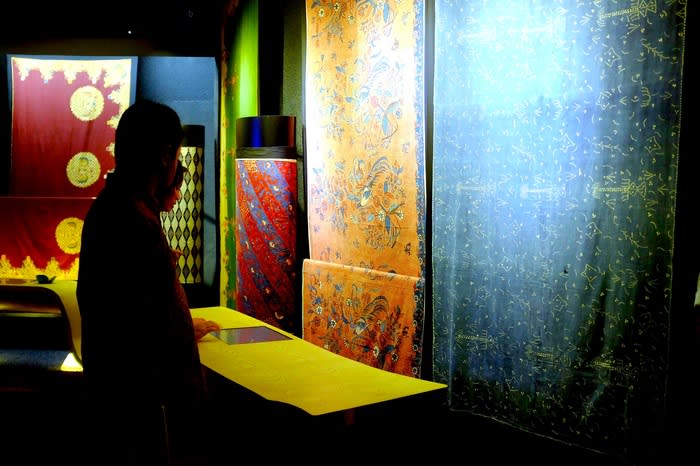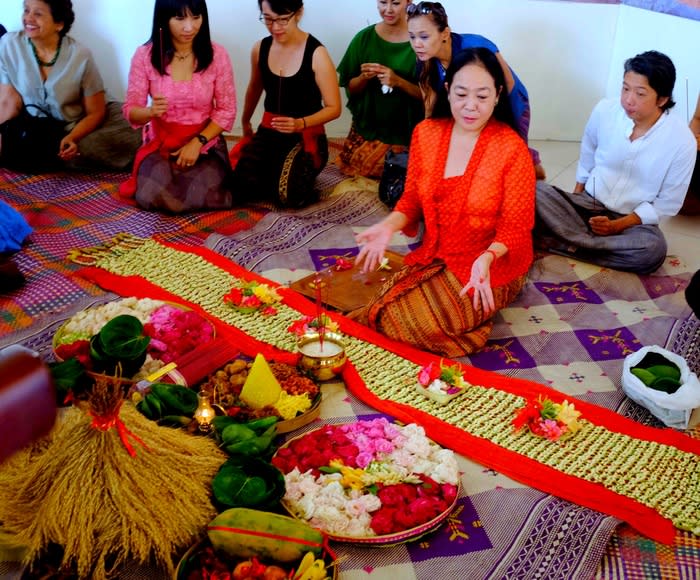Bin House opens high-tech batik museum in Kuta Bali
In a modest ceremony on Wednesday attended by relatives and close friends, renowned cloth maker and owner of Bin House, Josephine “Obin” Komara, launched the island’s first ever cloth museum.
The new museum, called simply Museum Kain (literally cloth museum), is on the third floor of Beachwalk, a sprawling upscale mall in Kuta. It is equipped with interactive displays, including touch-screen consoles in front of each piece of exhibited cloth.
Obin, who has gained national recognition for her work to conserve and promote batik as well as for her philanthropic work across the archipelago, declined to call the launch a “soft” or “grand” opening. Instead, she called it slametan, a term that refers to a Javanese ritual to express gratitude and seek divine blessing.
Relatives and guests did not sit on chairs but on pandan mats positioned around colorful and elaborate offerings that combined Javanese and Chinese cultural elements. The centerpiece was the cone-shaped yellow rice tumpeng that symbolizes Mount Semeru, where the gods in Javanese mythology lived.
“What we are trying to do today, through this museum, is to remember the past, to cherish the present and to prepare the future. This museum should be a place where our youngsters learn about the beautiful works created and passed on by their ancestors and at the same time be inspired to create their own,” Obin said.
The ritual took a somber note when Obin recalled that the idea to build the museum was her husband’s, Roni Siswandi, a noted archaeologist and batik connoisseur who passed away early this year.
“It was his dream to build me a museum. When he left I was so heartbroken that I decided to stop the project. But then my son stepped up and took to the reins. So, this
museum was Roni’s dream and Elang’s achievement,” she explained, glancing affectionately at her son Erlangga “Elang” Komara.
Toward the end of the ritual, fresh and colorful flower petals in cups made of leaves were handed to all the participants, who were requested to place them in the spots of their choices inside the museum as a sign of personal blessing and support. Yusman Siswandi, Roni’s older brother, then led the group through the museum by the light of a kerosene lamp.
Inside, as many as 61 rare pieces of batik are on display. Special lighting, which combines eco-friendly LED lights and fluorescent tubes, bring the pieces alive. Copper batik printing blocks, canting wax pens and dried leaves used for coloring were displayed in glass cases. The winding passageways were purposefully dark.
“That way visitors can concentrate on the objects and not be distracted by the other visitors,” Yusman said, adding that the collection would be rotated every six months to accommodate Obin and Roni’s collection of more than 600 rare batik.
Read also:





